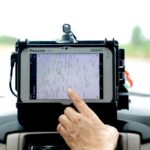Automotive fuses are used to protect your vehicle’s electrical wiring and overcurrent. They also give safety against short-circuiting that can ruin your whole drive.
So, although there is not much talk about automotive fuses, you need to know about all the different types of automotive fuse.
Today, I am looking forward to sharing a detailed talk about various widely used automotive fuses and much further information. Let’s dive in deep!
Types Of Automotive Fuse: Four Main Classes
People have concluded all the automotive fuses into four main types. Now I will share the main types and move forward to the further divisions.
1. Regular (ATO/ATC) Blade Fuses

ATO/ATC blade fuses are the most common type of fuses. These are standard-sized. Alongside automotive vehicles, you can use these in other electrical applications.
You must mount these fuses in a fuse block, holder, or panel. Starting from 1, these are available for up to 40 amps. The great thing about these fuses is that they are interchangeable.
2. Mini Blade And Low-Profile Mini Blade Fuses

Mini blade fuses have a small design that requires minimal space but offers extended protection. They are also very common in today’s automotive world. You can easily use these fuses in high temperatures without any problem.
Mini blade fuses and low profile fuses are almost the same, but low profile requires the least space because of their smaller plastic body. Both of them are available from 2 to 30 amps.
Also Read:
- Top 5 Best Jump Starters for Cars
- Top 5 Best Battery for Jeep Wrangler
- Top 5 Best OBD2 Scanner: Buying Guide
3. Micro 2 & Micro 3 Blade Fuses

These are smaller than the mini fuses with a rating of 5 to 30 Amperes. The fuses that contain two metal terminals or prongs are called micro 2, whereas the ones with three metal terminals are called micro 3. A micro 3 fuse can protect 2 different output circuits at a time.
4. Maxi Heavy-Duty Blade Fuses

These fuses come with ampere ratings from 20 to 100. Due to the high amps rating, they are used in many vehicles and electronic applications. These fuses give a reasonable time delay with low heat dissipation.
Also, these fuses are the largest of all of the above-mentioned fuses. They come color coded so you can identify the fuse ratings quickly.
Now, as I said earlier, these four are the main types. But there are six further divisions that you need to know. So, let’s have a quick read about those:
- Regular (ATO/ATC) Blade Fuses
I have already shared knowledge about this one. Another thing I must add about these fuses is that as they come with the same amperage rating, they are interchangeable in your vehicle.
- Blade Type Fuses
Blade fuses were developed back in 1975 and are still widely used. They come with a plastic mechanism with two prongs to attach. You will notice that they have a very simple structure other than the other fuses. Most vehicles have these due to their small and light size alongside their durability.
- Slow Blow Fuses
These fuses were invented to ensure more comfort and power. Unlike conventional auto fuses, these fuses do not blow immediately. Instead, they indicate a slow rise in the temperature during high current exposure. These fuses are also known as time-delay fuses.
- Glass Tube Type Fuses
These are very ancient in automotive vehicles. People used glass tubes in the early 1910s to prevent engine overheating and overcurrent accidents. Later on, automakers moved to the ECUs as they were more efficient than the glass tube fuses.
- Lucas Fuses
Lucas fuses were used in old British-made automobiles. They come 1 inch or 1.25-inch in length with regular color coding for their ampere rating. Moreover, they come in three different ratings, one for the regular current they carry, another for the instantaneous current to fuse, and the other for the continuous current to fuse.
- Maxi Heavy-Duty Blade Fuses
Again, I have explained a bit about these fuses. They have an amps rating of 20 to 100. You will find these fuses in the late model vehicle circuitry. The best thing about these fuses is that you can easily inspect the issue and replace them when needed.
More About Automotive Fuses
Are Micro And Mini Fuses The Same?
Sometimes, low-profile mini fuses are called micro as they are slightly smaller than mini fuses. In that sense, micro and mini fuses can be told the same. But lately, micro fuses refer to different types of fuses that vary in their characteristics.
Can You Use A Mini Fuse In Low Profile?
The main purpose of using low-profile fuses is to save space with their minimalist design. However, they do not vary in ampere ratings, so you can interchange these two if you don’t have space issues.
Does It Matter What Fuse You Use?
Yes, you need to use the fuse according to your vehicle’s power rating. So you have to know the correct fuse for your vehicle before you go for any.
Let’s Wrap Everything Up
Knowing which fuse is the right for your vehicle is mandatory when you care about your vehicle’s safety. Therefore, acknowledge which one is the one for your car and do not make any mistake choosing the right one! I hope you have liked this piece of information about types of automotive fuse. Also, don’t forget to like and share it.








